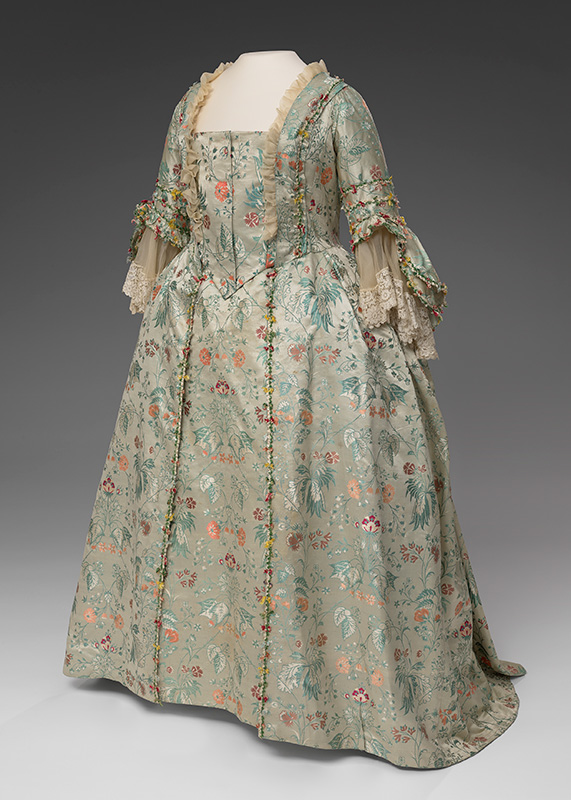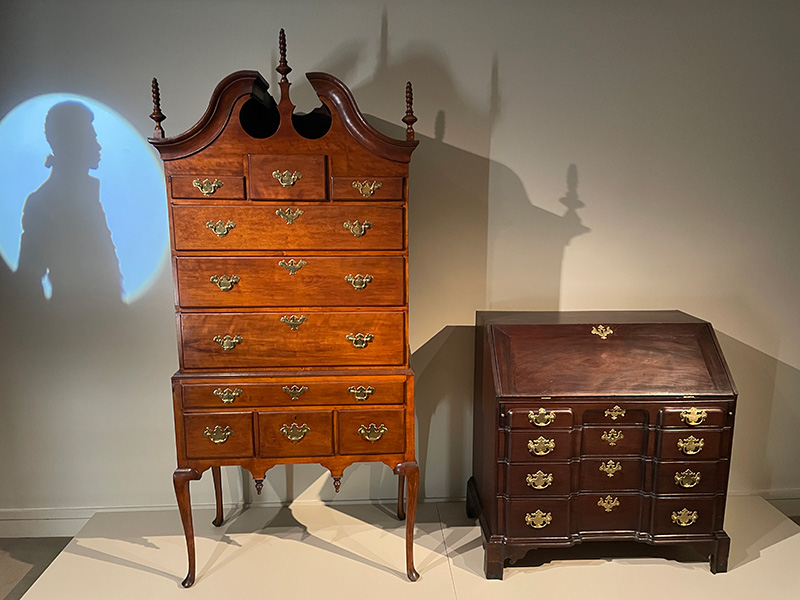Whose Revolution at the Concord Museum
Click on images to enlarge them and view captions.
by Reed Gochberg
What did it feel like to live through a revolution? The Concord Museum’s new special exhibition, Whose Revolution (on view through September 1, 2025), explores a pivotal moment in American history, when simmering tensions between the American colonies and Great Britain led to the outbreak of war. Marking the 250th anniversary of the American Revolution, this special exhibition highlights the stories of individuals, families, and communities, exploring the many meanings of revolution for the people who experienced the crisis.
Generously supported by the Decorative Arts Trust’s Prize for Excellence and Innovation, Whose Revolution features the experiences of women and children, free and enslaved Black people, and Indigenous communities during the years leading up to the first battles in Lexington and Concord in 1775. Through a broad range of objects—from paintings, prints, and political cartoons to textiles, historic clothing, and furniture—as well as film and media installations, the exhibition explores the complicated and sometimes competing emotions evoked by the growing conflict.
As the political crisis began to fray the edges of the British empire in Massachusetts, some simply hoped to maintain their usual way of life for as long as possible. A gown (figure 1) made of silk designed and woven in the famous Spitalfields neighborhood of London was an eye-catching and expensive article of clothing, intended to signal not only the wearer’s wealth and status, but also her British identity. In 1760, she would have been proud to wear it. By 1770, she might have hidden it away, well aware that wearing silk had become a political statement. Passed between generations of women in Concord’s prominent Buckley family, its meaning also shifted over time.
Although a silk gown illustrates the ways that Americans presented themselves in public, other objects evoke private thoughts and possessions. On view in Whose Revolution are three pockets from the 18th century, including an elaborately embroidered pocket (figure 2) featuring motifs of leaves and flowers. Then, as now, pockets were practical items for the women who carried them: tied beneath their outer garments, they were used to carry tools and money, but also occasionally letters or other forms of communication. Worn close to the body, their contents were invisible to others unless the wearer revealed them. These pockets offer reminders of the private lives of women, including the thoughts and opinions that they may have chosen to keep hidden.
Similar questions extend to the experiences of free and enslaved people who lived in Concord during the pivotal years leading up to the war. A focal point within Whose Revolution is an installation that features the silhouettes of four enslaved people (figure 3)—Frank, Phyllis, Cate, and Brister Freeman—in conversation with a desk and high chest owned by their enslavers. This installation emphasizes their presence within households where conversations about liberty were taking place. It foregrounds the people who cared for furniture and clothing, and whose exploited labor is a significant part of these objects’ history. Occupying a full wall of the gallery, the silhouettes fade in and out of view, offering a reminder of the stories that were rarely recorded, that remain elusive, and that require deeper attention to honor them.
The first in a series of three special exhibitions that will be on view through 2026, Whose Revolution is part of a wide range of Museum initiatives, including public programs, teacher workshops, and Museum History Kits of primary source materials that will be distributed to classroom teachers across Massachusetts. The Museum’s extensive collection of objects connected to the American Revolution, many of which are featured in the ongoing exhibition April 19, 1775, is the subject of a new catalogue, Eyewitness to Revolution: The American Revolution Collection at the Concord Museum, written by Museum curator David F. Wood. Supported by the Decorative Arts Trust’s Prize for Excellence and Innovation, the beautifully illustrated catalogue features a continuous narrative carried by the objects.
These broader initiatives reflect the Concord Museum’s commitment to telling an expanded story of the American Revolution during the 250th anniversary. By highlighting the ways that objects speak to the promises and possibilities of the revolution, they offer numerous opportunities for continued reflection, engagement, and conversation.
Reed Gochberg was the Associate Curator and Director of Exhibitions at the Concord Museum and is now Curator at the Boston Athenaeum.
A print version of this article was published in The Magazine of the Decorative Arts Trust, one of our most popular member benefits. Join today!



